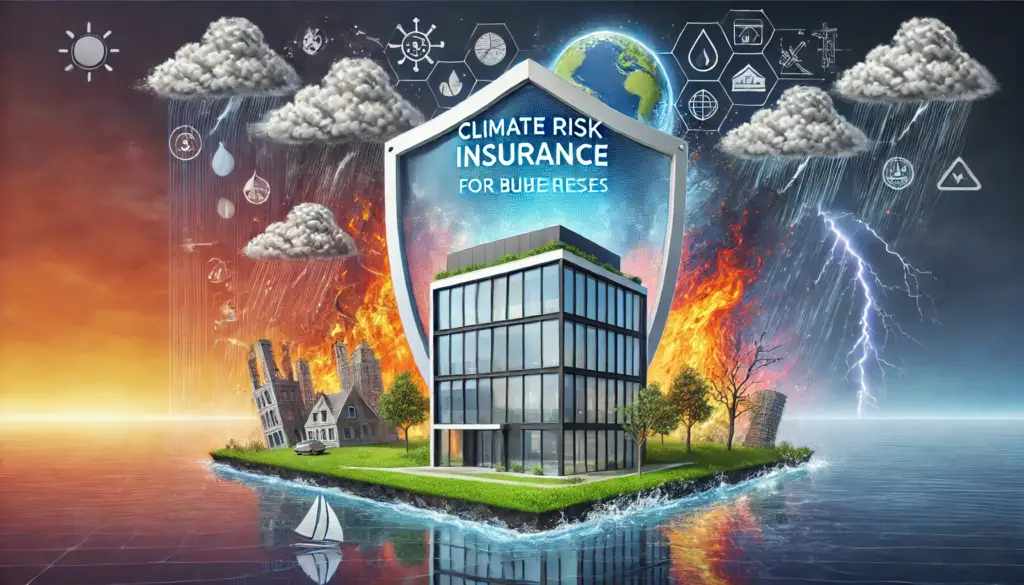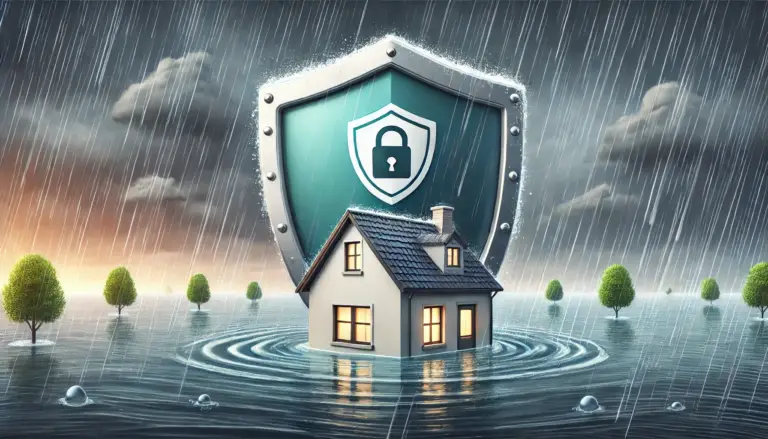
Climate Risk Insurance for Businesses: A Vital Tool for Sustainability
Climate change has become a pressing concern for businesses globally, exposing them to unprecedented risks such as extreme weather events, rising sea levels, and prolonged droughts. Climate risk insurance has emerged as an essential tool for mitigating these challenges, providing businesses with financial protection against the impacts of climate-related disasters. This article explores climate risk insurance for businesses, its benefits, and its drawbacks.
What is Climate Risk Insurance?
Climate risk insurance is a specialized form of coverage that protects businesses from financial losses caused by climate-related risks. These risks can include natural disasters such as hurricanes, floods, wildfires, and heatwaves, as well as slower-onset events like droughts and sea-level rise.
The goal of this insurance is to provide businesses with financial resilience, enabling them to recover quickly and continue operations in the aftermath of climate-related disruptions.
Why Businesses Need Climate Risk Insurance
Rising Frequency of Disasters: Climate change has increased the frequency and intensity of extreme weather events, making businesses more vulnerable.
Economic Stability: Uninsured losses can destabilize businesses, particularly small and medium-sized enterprises (SMEs).
Compliance with Regulations: Many industries are required to have insurance coverage to meet legal and environmental standards.
Protecting Investments: Climate risk insurance safeguards long-term investments in infrastructure, supply chains, and human resources.
Advertisements
Advantages of Climate Risk Insurance for Businesses
1. Financial Security in Disasters
Climate risk insurance provides a financial safety net, covering repair costs, operational disruptions, and loss of revenue caused by climate-related events.
2. Enhanced Business Continuity
With insurance in place, businesses can resume operations faster after a disaster, minimizing downtime and preserving customer trust.
3. Risk Assessment and Mitigation
Insurers often conduct risk assessments, helping businesses identify vulnerabilities and implement preventive measures to reduce future risks.
4. Support for Sustainable Practices
Some climate risk insurance policies incentivize businesses to adopt eco-friendly practices, such as renewable energy or sustainable supply chain management.
5. Access to Capital
Businesses with climate risk insurance are often viewed as less risky by investors and lenders, improving access to funding.
Disadvantages of Climate Risk Insurance for Businesses
1. High Premiums in High-Risk Areas
Businesses located in areas prone to extreme weather may face higher premiums, making insurance costly.
2. Limited Coverage
Standard policies may exclude certain risks, such as slow-onset climate events or indirect economic losses, requiring additional coverage.
3. Complexity of Claims
Filing and processing claims can be time-consuming, especially if the insurer disputes the cause or extent of damage.
Advertisements
4. Encouragement of Risk-Taking
Having insurance might lead some businesses to take greater risks, assuming they are fully protected, which can backfire.
5. Dependence on Accurate Predictions
Climate risk insurance often relies on data and models to assess risks. Inaccurate predictions can result in under-compensation or unmanageable premiums.
Industries That Benefit Most from Climate Risk Insurance
Agriculture: To protect crops and livestock from droughts, floods, and other climate impacts.
Manufacturing: To safeguard facilities and supply chains from weather-related disruptions.
Energy: To cover damages to renewable energy infrastructure and power grids.
Advertisements
Tourism and Hospitality: To address loss of revenue caused by extreme weather events affecting travel and accommodations.
How to Choose the Right Climate Risk Insurance
Assess Your Climate Risks: Identify the specific climate-related threats to your business based on location and industry.
Evaluate Coverage Options: Look for policies that address your most pressing vulnerabilities, such as floods, wildfires, or droughts.
Consider Customization: Many insurers offer tailored solutions to meet the unique needs of different businesses.
Compare Costs and Benefits: Weigh the premiums and deductibles against the level of coverage provided.
Adopt Risk-Reduction Measures: Implement strategies to mitigate risks, such as installing resilient infrastructure or diversifying supply chains.
Read More:
What is Climate Risk Insurance ? Insurance vs Without Insurance
Flood Insurance to Protect Your Homes and Businesses
Storm and Hurricane Insurance to Protect Your Property
Drought Insurance to Protect Against Water Scarcity
Conclusion
Climate risk insurance is an invaluable tool for businesses in an era of increasing climate uncertainty. By providing financial protection and promoting resilience, it helps businesses navigate the challenges posed by climate change.
While high costs and limited coverage can be drawbacks, the advantages of ensuring business continuity and financial security far outweigh the disadvantages. Businesses must carefully evaluate their needs and risks to select the right insurance policy, ensuring they are prepared for the unpredictable impacts of a changing climate.
Advertisements



